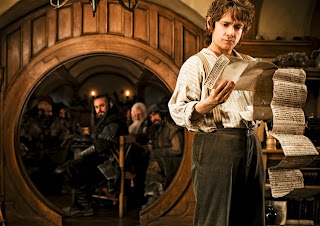Biblo Baggins: The protagonist that happens to be a wealthy hobbit. He develops into deeper character with a sense of new morals and adventure. Even with Bilbo's moral code, he happens to be the burglar of the party and the most secretive character.
Gandalf the Grey: The wise and the secretive character of the party. He always seems to appear when the party is in dire need of him, otherwise he is elsewhere.
Thorin Oakenshield: The leader of the dwarf party and the sole survivor of the Lonely Mountian-dwarf kings. He is the sole inheritor to Smaug's collection. His pride and greed will be his downfall.
The Other Twelve Dwarves:
- Dwalin
- Balin
- Kili
- Fili
- Dori
- Nori
- Ori
- Oin
- Gloin
- Bifur
- Bofur
- Bomber
Gollum: A sneaky creature that lives under the Misty Mountains. He attempts to kill Bilbo in a game of riddles. He owned a magical ring that he lost, that he later accuses Biblo of stealing.
Smaug: The last dragon of Middle-Earth. He resides in the Lonely Mountain. Even though he is the main villain in the novel, his sense of dark humor is entertaining.
Bard: The Lake Town captain who kills Smaug.
Beorn: A man that can turn into a bear. He saves the party from goblins.
Necromancer: The Necromancer is only mentioned in The Hobbit as an evil force in Mirkwood. It is later revealed in LOTR that he is Sauron.
Wargs: Evil wolves that ally themselves with the goblins.
Trolls: Dull-witted creatures that attempt to eat the party. They argue so long on how to prepare Bilbo and the dwarves, that they forgot to hide in their cave when the sun came up. Thus turning them to stone.


